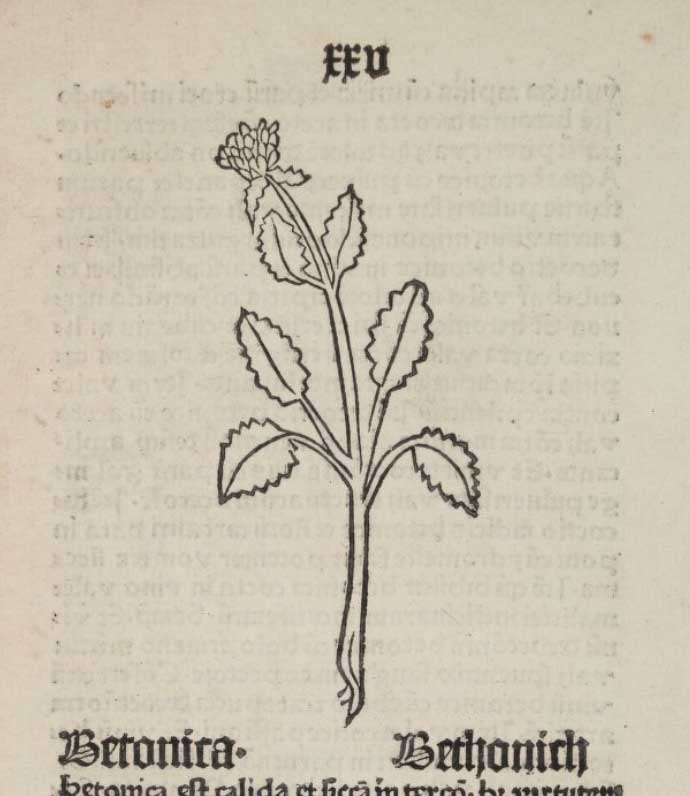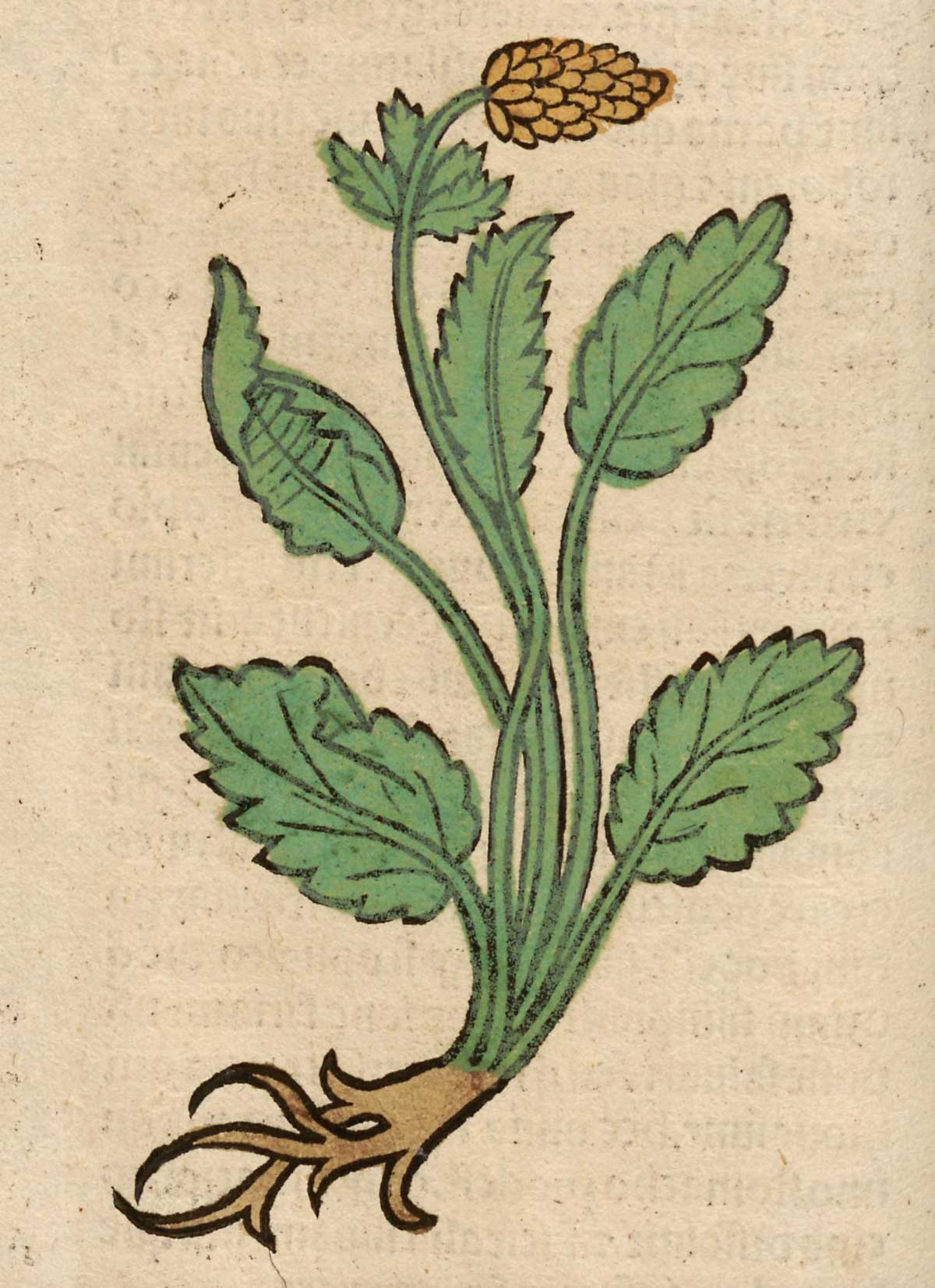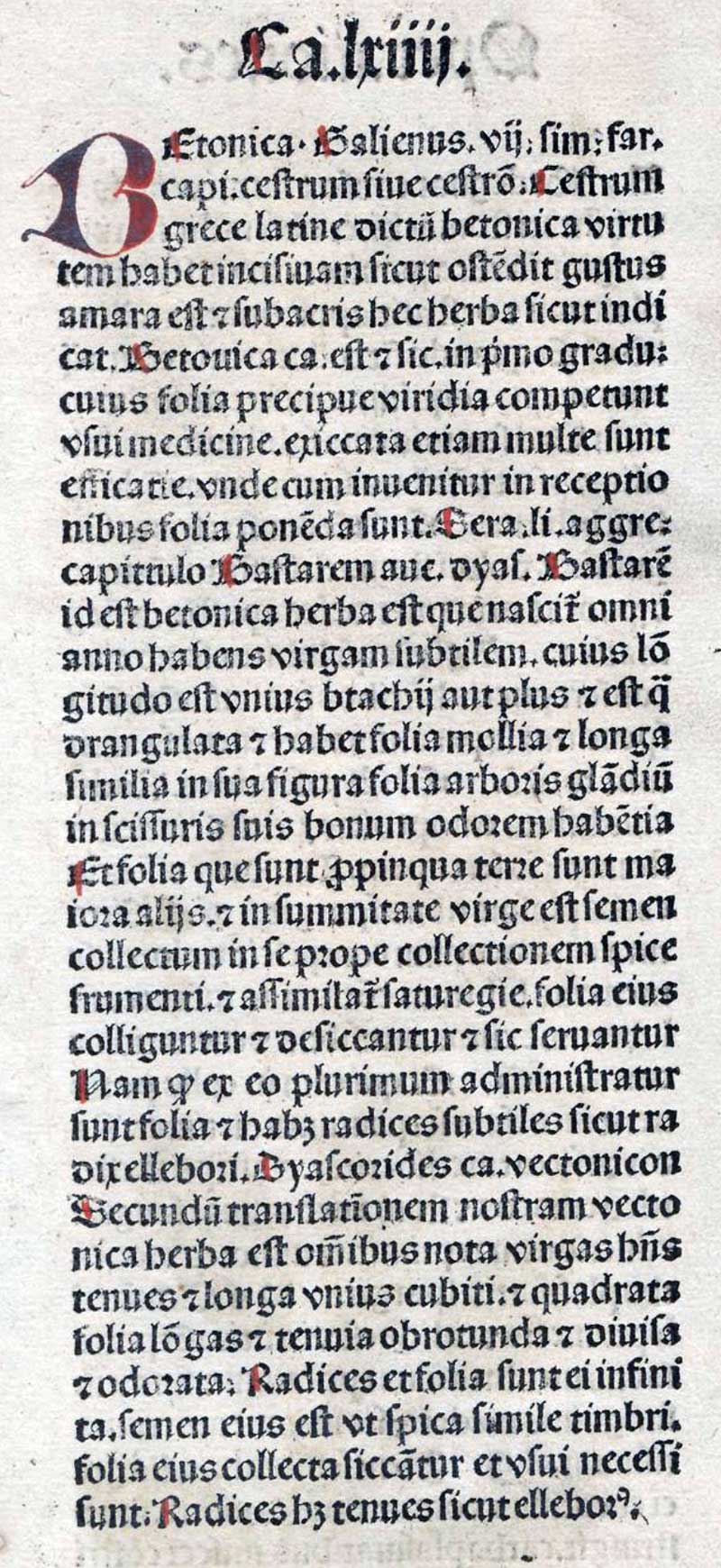Among plants in some way similar to Pantagruelion, referred to throughout Chapter 49.
The leaves of Pantagruelion are incised all around, like those of betony.
Notes
Betonica
Betonica
Betonica (text)
Stachys officinalis
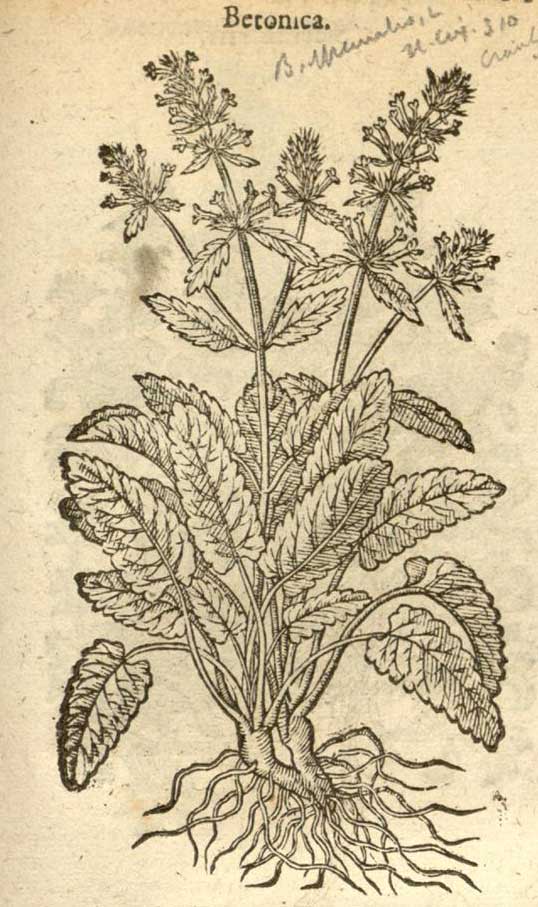
Stachys officinalis (L.) Trevis. [as Betonica]
Stachys betonienkraut
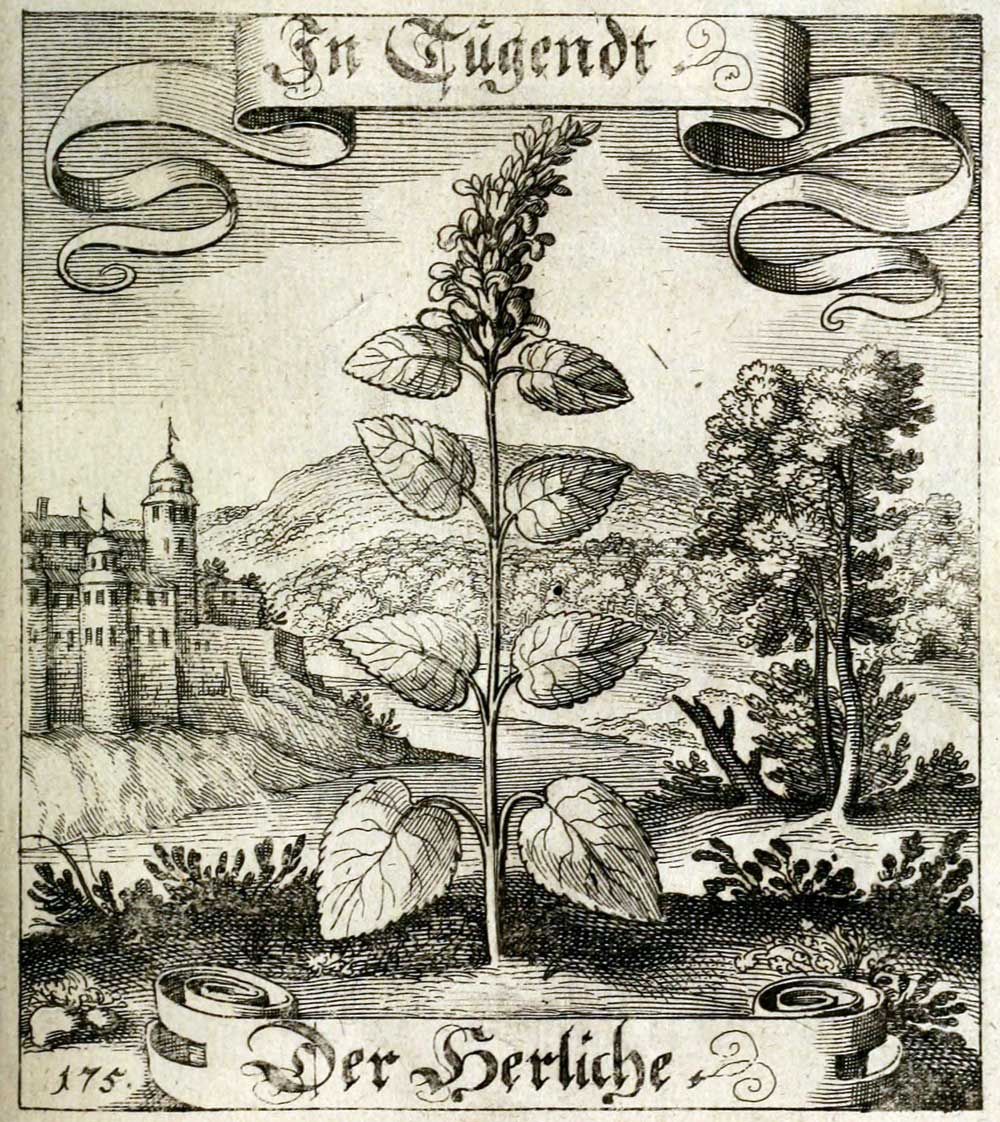
Stachys betonienkraut [as Betonica betonienkraut]
betony
Pliny 25.46.84 The Vettones in Spain discovered the plant called vettonica in Gaul, serratula (“the plant with leaves like a saw”) in Italy, and cestros or psychotrophon by the Greeks, a plant more highly valued than any other. It springs up with an angular stem of two cubits, spreading out from the root leaves rather like those of lapathum, serrated, and with a purple fruiting-head.
betoine
[or as the Saxifragum] This is added by the Translator [Urquhart], The author only says, as Betony.
betoine
Mauvais comparison ; qu’il sagisse ici de Betonica officinalis L., l’a plus réputée dans l’ancienne thétapeutique, ou de B. alopecuros L. comme le pense M. Sainéan (H.N.R., p. 104) ; bétoine a des feuilles crénelées, tandis que les folioles du chanvre sont dentées. (Paul Delaunay)
betoine
Plante aux feuilles crénelées.
betony
Vettones in Hispania eam quae vettonica dicitur in Gallia, in Italia autem serratula, a Graecis cestros aut psychrotrophon, ante cunctas laudatissima. exit anguloso caule cubitorum duum e radice spargens folia fere lapathi, serrata, semine purpureo. folia siccantur in farinam plurimos ad usus. fit vinum ex ea et acetum stomacho et claritati oculorum, tantumque gloriae habet ut domus in qua sata sit tuta existimetur a periculis omnibus.
The Vettones in Spain discovered the plant called vettonica in Gaul, serratula [“The plant with leaves like a saw”] in Italy, and cestros or psychrotrophon by the Greeks, a plant more highly valued than any other. It springs up with an angular stem of two cubits, spreading out from the root leaves rather like those of lapathum, serrated, and with a purple fruiting-head. Its leaves are dried into a powder and used for very many purposes. From it are made a wine and a vinegar, good for the stomach and the eyesight. So great is its fame that the home in which it has been planted is considered to be safe from all danger
betony
betony Forms: (1 betonice), 4-6 betone, 5 betan, batany, 5-6 betany, betayne, betonye, 6 bittonie, byten, bytone, betain(e, 6-7 betonie, 7 bettony, 5- betony. [adopted from French bétoine, adaptation of late Latin *betonia for betonica, written by Pliny (Natural History xxv. 46) vettonica, and said by him to be a Gaulish name for a plant discovered by a Spanish tribe called Vettones.]
A plant (Stachys Betonica) of the Labiate order, having spiked purple flowers and ovate crenate leaves. In former days medicinal and magical virtues were attributed to it.
[C. 1000 Leechdoms, Wortcunning, and Starcraft of Early England. II. 58 Wyl ón ealað..betonican. ]
A. 1275 in Thomas Wright and Richard Paul Wülcker, Anglo-Saxon and Old English Vocabularies (1884). 554 Bethonica, beteine.
C. 1375 ? Barbour St. Baptista 760 In þe prouince of þe sare (= tzar?) … Quhare mene makis drink of spycery-Of betone þare is gret copy.
C. 1440 Promptorium parvulorium sive cleriucorum 34 Betayne, herbe [1499 batany or betony], betonica.
1483 Catholicon Anglicum 30 Betan, harba.
1519 William Horman Vulgaria in Promptorium parvulorum sive clericorum 34 Nesynge is caused with byten (betonica) thrust in the nostril.
1586 Cogan Haven Health lxxiii. (1636) 79 Betaine, though it grow wilde, yet it is set in many Gardens.
1621 Burton Anatomy of Melancholy. iii. iv. ii. vi. (1676) 721 All which [herbs] … expel Devils … The Emperour Augustus … approves of Betony to this purpose.
betony
Crenate – having the edge notched or toothed with rounded teeth, finely scalloped.
